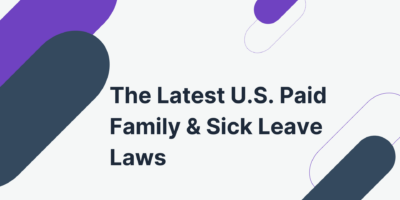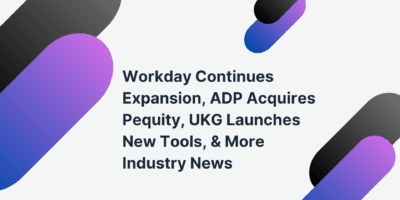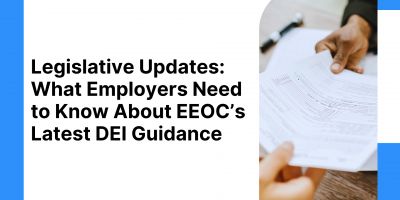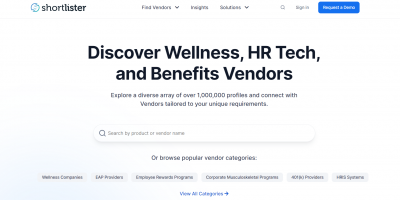
The Latest U.S. Paid Family & Sick Leave Laws
Without a federal policy, paid leave still depends on where you live, not how much you need it. But will that change soon?

The first 100 days of the new administration have brought plenty of headlines.
Tariff uncertainty, major federal restructuring, and issues like immigration are once again taking center stage.
While those stories dominate the news, the private sector has also had to navigate a wave of policy shifts and operational uncertainty.
From new legal risks to weakened federal oversight, HR teams and legal departments are entering a complex phase that demands better compliance strategies.
This article explores what has happened so far and what employers should pay attention to as the administration moves forward.
In his first days in office, President Trump issued an executive order that dramatically changed federal diversity and affirmative action policies.
The order, titled “Ending Illegal Discrimination and Restoring Merit-Based Opportunity,” revokes Executive Order 11246 – a decades-old rule requiring federal contractors to implement affirmative action plans for women and minorities – and terminates all federally driven DEI programs.
The administration explicitly barred the use of hiring or promotion quotas and what it calls “illegal DEI and DEIA mandates” in any federal operations. Agencies have also been directed to investigate and penalize what they consider illegal DEI practices in the private sector.
However, these moves are being challenged in court: a federal judge has already issued a preliminary injunction blocking enforcement of the DEI executive orders.
For employers, now is the time to audit DEI programs to ensure compliance with the new directives.
Programs like minority-only internships, hiring quotas, or promotion targets based on protected characteristics may bring scrutiny or even legal challenges in the current environment.
Employers can continue voluntary diversity efforts, but those efforts should focus on inclusion and broad outreach rather than any numerical targets or exclusive programs.
Learn more: Legislative Updates: What Employers Need to Know About EEOC’s Latest DEI Guidance
The Trump administration’s first 100 days have been marked by a clear push to accelerate AI innovation with minimal regulatory obstacles.
In January, President Trump signed Executive Order 14179, “Removing Barriers to American Leadership in Artificial Intelligence,” which rescinded previous guidelines for the safe and ethical use of AI.
In practice, this means federal regulators have paused or reversed efforts to impose new AI oversight. For example, the Equal Employment Opportunity Commission (EEOC) and the Department of Labor (DOL) quickly withdrew their recent technical guidance on algorithmic hiring tools and AI-driven employment decisions.
For companies, the takeaway from these orders is a relief from federal AI regulations. Companies can deploy AI in recruiting, HR, and operations without new government mandates or reporting requirements.
However, this deregulation does not grant carte blanche.
All existing anti-discrimination and labor laws still apply to AI tools.
In addition, several states and cities have implemented or are developing their own governance laws for artificial intelligence, creating a patchwork of AI regulations that companies must navigate.
Therefore, employers need to self-police their AI systems’ fairness and transparency in the absence of stringent federal oversight.
Learn more: Decoding AI Regulation: What Employers Need to Know in 2025
In late January, President Trump removed the sitting National Labor Relations Board (NLRB) General Counsel and fired the sitting Democratic Board member, Gwynne Wilcox.
As we previously reported, a federal judge reinstated Gwynne Wilcox, however, the U.S. Court of Appeals for the D.C. Circuit stayed the District Court’s order.
Because of these removals, the five-member Board currently still lacks the three-member quorum needed to issue decisions.
In the short term, that has effectively stalled new NLRB rulings and slowed the pro-union momentum seen in the prior administration.
With the NLRB’s leadership now in flux and shifting to a Republican majority, initiatives that would have expanded worker and union rights are likely on hold or will be narrowed.
However, don’t assume enforcement is gone.
Employers should still follow NLRB requirements to avoid unfair labor practice charges.
Over the last few months, the leadership and direction of the EEOC changed abruptly.
President Trump removed Commissioners Charlotte Burrows and Jocelyn Samuels before their terms were up, along with EEOC General Counsel Karla Gilbride.
Lawsuits have already been filed, challenging whether the president has the legal authority to do so. For now, it’s unclear whether the courts will bring them back or allow the firings to stand.
That leaves the EEOC with just two commissioners: Acting Chair Andrea Lucas, a Republican, and Democrat Kalpana Kotagal.
The EEOC needs a three-member quorum to take formal action, so the new administration may soon add a new Republican commissioner, which would give him a working majority.
Acting Chair Andrea Lucas has made her goals clear. Among her top priorities are:
Despite these changes, employers should remember that the EEOC will continue to enforce the core anti-discrimination laws, such as Title VII, ADA, and others.
In January, the White House issued a regulatory freeze, and early indications are that few (if any) new OSHA rules will be proposed in the next few years.
The memorandum affects several regulatory efforts, such as OSHA’s proposed rules on heat-related illness and a new Emergency Response Standard meant to replace the outdated Fire Brigades rule.
However, some of the more debated or recently updated policies, like the “Worker Walkaround Rule,” changes to the Hazard Communication Standard, and updates to OSHA’s recordkeeping requirements, remain unchanged for now.
In a separate update on February 5, 2025, OSHA confirmed it has stopped enforcing its COVID-19 reporting and recordkeeping rules.
Additionally, the agency’s proposed regulation for infectious diseases in health care and other high-risk settings has been marked as “withdrawn” on the White House OIRA site.
President Trump’s team has also nominated OSHA leadership, which is inclined to prioritize compliance assistance over enforcement.
Overall, many signs indicate that the agency will focus more on guiding employers than on aggressive inspections.
While enforcement may become somewhat less thorough under Trump-appointed officials, OSHA will still enforce core safety rules and penalize serious violations.
Even more importantly, companies operating in states that run their own OSHA programs should note that those states are continuing with stricter safety initiatives (for example, Nevada’s new heat regulations) despite the relaxed approach at the federal level.
Learn more: OSHA Regulations & Workplace Safety
Senior Content Writer at Shortlister
Browse our curated list of vendors to find the best solution for your needs.
Subscribe to our newsletter for the latest trends, expert tips, and workplace insights!

Without a federal policy, paid leave still depends on where you live, not how much you need it. But will that change soon?

November mirrors the defining shifts of 2025, from strategic growth driving consolidation across HR tech, wellness, and benefits, to AI maturing from a promising technology to a pillar of innovation and efficiency.

What once passed as progress may now risk penalties. Here’s what employers need to know about the EEOC’s latest DEI rules and enforcement shifts.

Their recognition of Shortlister emphasizes the platform’s dedication to providing an efficient, data-driven approach to selecting HR and benefits vendors.
Used by most of the top employee benefits consultants in the US, Shortlister is where you can find, research and select HR and benefits vendors for your clients.
Shortlister helps you reach your ideal prospects. Claim your free account to control your message and receive employer, consultant and health plan leads.